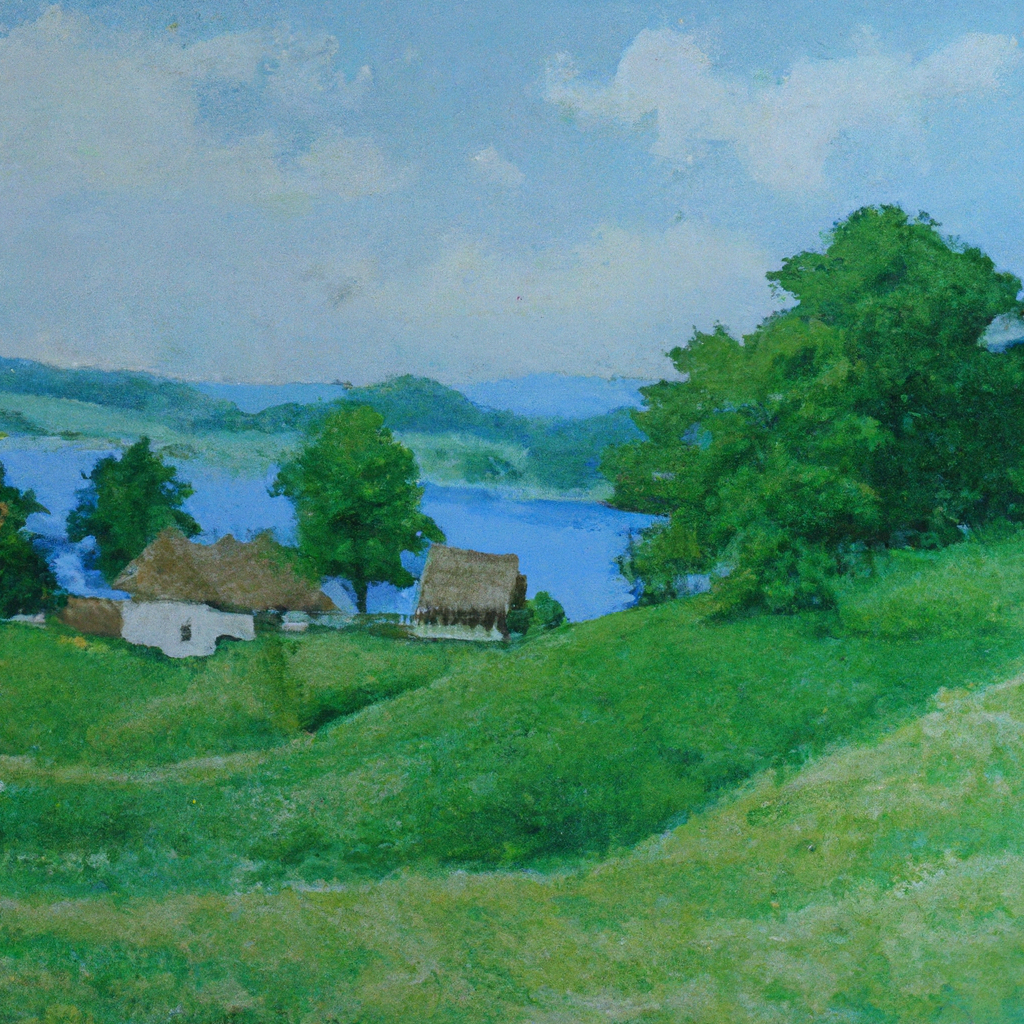Oil painting landscapes are one of the most popular forms of art and have been around for centuries. Creating oil paintings is a process that requires patience, skill, and a lot of practice. In this article, we will go over the painting techniques involved in creating landscape paintings, step-by-step painting guide, and the importance of art tutorials and art classes in this process.
Painting Techniques
When it comes to painting, there are a variety of techniques that artists use to create different effects and textures in their work. For oil painting landscapes, there are a few important techniques to keep in mind:
– Underpainting: This involves creating a base layer of paint on the canvas. It can be done in a monochromatic color or with a color that will eventually be covered up. This layer is important because it helps to establish the value and tone of the painting.
– Blocking in: This technique involves using broad strokes of paint to establish the basic shapes and colors of the landscape. It’s important to block in the major shapes and colors before moving on to the details.
– Glazing: This technique involves layering thin, translucent layers of paint over each other to create depth and richness in the colors. It’s important to let each layer dry completely before adding the next.
– Impasto: This technique involves using thick, textured layers of paint to create a three-dimensional effect. It can be used to create the appearance of foliage, rocks, or other natural elements in the landscape.
Step-by-Step Painting Guide
Now that we’ve gone over some of the painting techniques involved in creating oil painting landscapes, let’s dive into a step-by-step painting guide:
1. Choose your subject: Before you start painting, you need to choose the subject of your landscape. This could be a real-life location or a scene from your imagination.
2. Sketch your composition: Once you’ve chosen your subject, sketch out the basic composition of the painting. This will help you determine where the major shapes and colors will go.
3. Underpainting: With your sketch in place, start with an underpainting layer. Use a monochromatic color or a color that will eventually be covered up.
4. Block in: Once your underpainting is dry, start blocking in the major shapes and colors of the landscape. Use broad strokes of paint and don’t worry too much about the details at this point.
5. Build up the details: Once you have the major shapes and colors in place, start building up the details. Use glazing or impasto techniques to create depth and texture.
6. Refine and finish: Finally, refine the details and add any finishing touches to the painting. This could include highlights, shadows, or any other small details that will bring the painting to life.
Importance of Art Tutorials and Art Classes
Creating oil painting landscapes is a process that takes time and practice. That’s why art tutorials and art classes are so important. They give artists the opportunity to learn new techniques, get feedback on their work, and connect with other artists.
Art tutorials can be found online or in books, and they often provide step-by-step instructions for creating specific types of paintings. Art classes, on the other hand, are a more hands-on approach to learning. They provide artists with the opportunity to work directly with a teacher and receive feedback on their work.
Both art tutorials and art classes are valuable resources for artists of all skill levels. They can help beginners learn the basics of painting and provide more experienced artists with new techniques and ideas.
Conclusion
Creating oil painting landscapes is a rewarding process that requires patience, skill, and practice. By using the painting techniques we’ve discussed and following a step-by-step painting guide, artists can create beautiful and realistic landscapes. And by taking advantage of art tutorials and art classes, artists can continue to grow and improve their skills.







